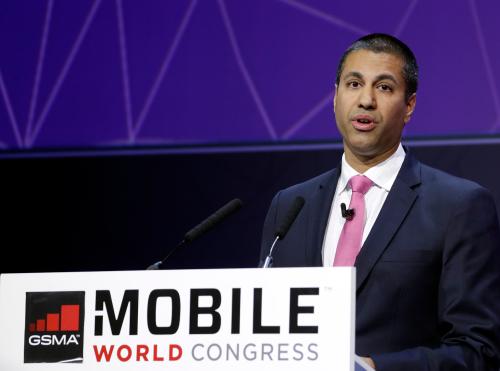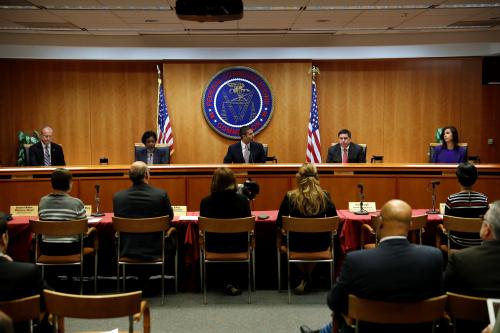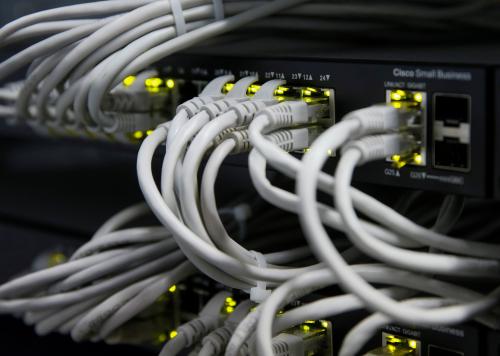As we move into 2016, an unresolved national communications policy dilemma remains: whether the public switched telephone network and the Internet are parallel systems or parts of a larger ubiquitous network environment. Determining which characterization will be followed has profound consequences for regulatory treatment, as an important recent oral argument in the United States Court of Appeals for the District of Columbia Circuit made clear.
There, a three-judge panel led a spirited three-hour session focusing on a challenge to the Federal Communication Commission’s February 2015 Open Internet Order, commonly known as its Net Neutrality decision. Unlike prior FCC orders in this area that the DC Circuit had twice rejected on legal grounds, the challenged order for the first time asserted equal application of the FCC’s net neutrality rules to mobile as well as fixed broadband networks. This expansion of regulatory authority may be permissible under the Telecommunications Act of 1996 if the FCC deems mobile broadband to be a “commercial mobile service.”
The FCC argued that its rationale was correct, since it determined mobile broadband was an interconnected service that fit within the commercial mobile service definition that Congress specified in the law. This argument is not as clear as the FCC contends, however, since the actual language of the statute refers to interconnection with the traditional telephone network, which operates by connecting telephone numbers. Mobile broadband, in contrast, accesses the Internet and relies on an entirely different basis for connecting—namely, Internet Protocol (IP) addresses.
The FCC contended that this statutory construction should be overlooked because the public switched network of 20 years ago is different than the current network landscape of today. In a nation that increasingly relies on smartphones as the dominant mode of communication, the FCC asserted that while literally different, the two networks were actually part of the same network environment that permits us to access anyone with a telephone number and anyone with an IP address. This thinking leads to the conclusion that under the net neutrality rules, the expectations for both networks should be identical.
“Did Congress really intend these two services to be regulated totally differently even if I can’t tell the difference?”
In the oral argument, Judge Sri Srinivasan posed a question to a lawyer representing CTIA-The Wireless Association, which opposes the FCC order. In effect, he asked whether the Commission’s view of functional equivalency of the telephone networks and the Internet made sense at a practical level, with a vivid illustration in mind: “So if I’m walking in my house with an iPad — at one end of the hall I connect to my Wi-Fi, at the other end, my device switches over to my wireless subscription — did Congress really intend these two services to be regulated totally differently even if I can’t tell the difference?” Under this analysis, the FCC’s argument that it should enforce equal net neutrality for both seems intuitively persuasive.
But Judge David Tatel, who had written the previous Net Neutrality decision that found the FCC overstepped its regulatory authority, offered a contrasting view to this line of thinking. Judge Tatel has a smartphone, but unlike many smartphone users, he only relies on it to make calls through the traditional telephone network, using telephone numbers. Since he doesn’t access the Internet on his device, he is not connecting to IP addresses at all. The two networks thus are not interconnected, which is the prerequisite that the Telecommunications Act specifies in order to allow the FCC to treat mobile broadband as a regulated commercial service.
These two perspectives crystallize the dilemma that the court confronts as it decides whether mobile broadband should be treated in the same stringent way as fixed broadband, though the FCC has never done so before. The Commission argues that as an expert agency with broad delegated authority from Congress, it should be allowed to change its mind over time as new technological developments such as the smartphone take hold, and craft new rules accordingly.
But the other side contends that Congress did not convey this expansive authority in the law, and points to the importance of interconnection and reference to the telephone network in the actual statutory language as powerful support for its position.
Given the emerging dominance of mobile over fixed service, if the FCC can’t regulate both, it may win the battle but lose the war. Given that a further appeal is likely regardless of which side prevails, including possible review by the US Supreme Court, Congress may find itself re-emerging as the best source of guidance for the FCC. Legislative action can definitively clarify whether Congress intends for the telephone network and Internet to be joined at the hip, or should continue to function in parallel with differing regulatory treatment.
Note: ACTwireless, a project of CTIA, is a donor to the Brookings Institution. The findings, interpretations, and conclusions posted in this piece are solely those of the author and not influenced by any donation.






Commentary
Mobile broadband regulation and net neutrality: One network or two?
December 15, 2015